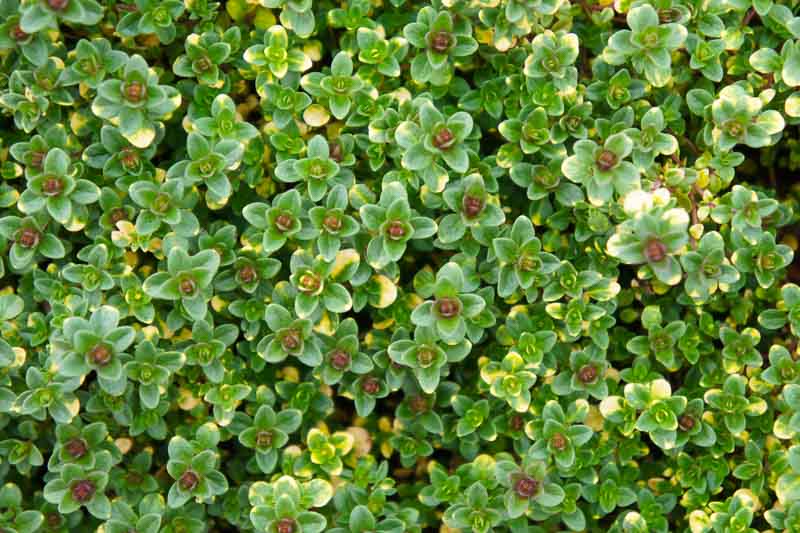Thymus
There are some 350 species of Thymus (Thyme) but only a few are used as ornamental plants, including T. serphyllum (Creeping Thyme), T. citriodorus (Lemon Thyme) and T. pseudolanuginous (Woolly Thyme). All are evergreen woody-based perennials, shrub or sub-shrubs with small aromatic leaves and whorls of small, tubular, purple, pink or white flowers in late spring or summer. Some make terrific groundcovers, others are more suited to filling between pavers where food traffic is light. Not to forget those primarily grown as culinary herbs! Easy to grow, they all require good drainage and a sunny position.

